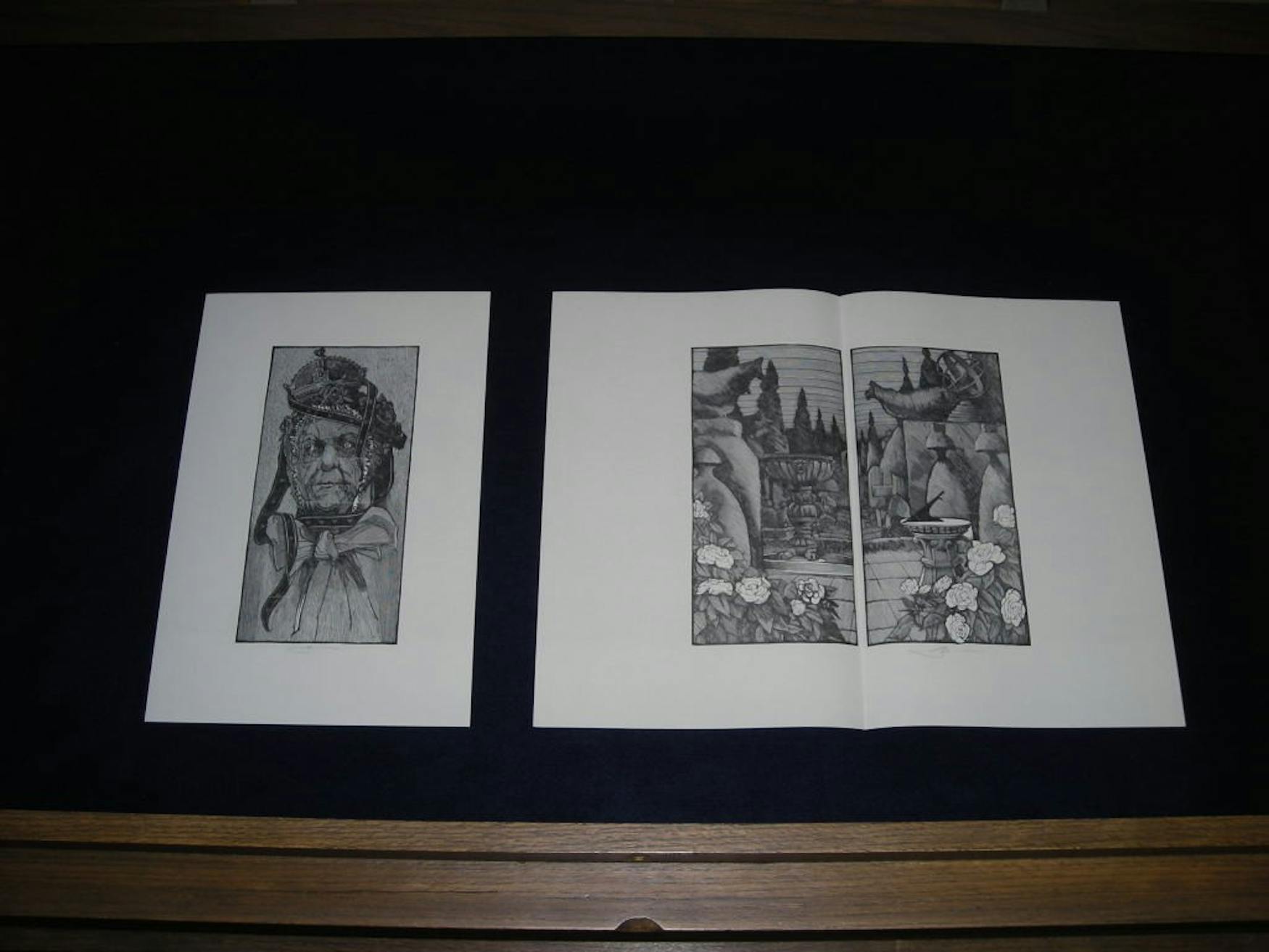Moser: engraving stories and faith
Throughout his career, master wood engraver Barry Moser left his footprints in many categories of books, from children’s books to religious texts. He is accomplished not only in watercolor illustrations and wood engravings, but also as an “engineer” of books’ creation, as he described. On Friday, April 30, Director of Brandeis Arts Engagement Ingrid Schorr invited Moser — along with author, poet and gallery owner Rich Michelson — to talk about the new edition of Moser’s classic book, “The Art of Wood Engraving & Relief Engraving,” published by Brandeis University Press. In the event, Moser shared his experience and insights on his career.
Moser’s art has an abstract style, but it was not always like this. He grew up enjoying painting with a realistic style and continued to do so in his early college years in Tennessee. After moving to Alabama and attending Auburn University, Moser began to receive instruction in a completely different style. He still remembers when his professor gave him a three-inch brush and a four-foot square canvas, and asked him not to draw what “look(s) like” the object. Rather, he was instructed to deconstruct the subject matter and then reconstruct it. The education he received at Auburn became the foundation for his abstract style.
During his time at Auburn, Moser also came across the artworks of Leonard Baskin, a prize-winning sculptor and graphic artist who lived in Northampton, Massachusetts. Moser recalled that it was a dreary day when he saw Baskin’s work. The intricacy of lines in his print works captured all of Moser’s attention immediately. He decided to move up north to New England to study with him.
Working with Baskin provided Moser both the skills and the mindset to be a master. The journey began with confusions and reflective questions toward the process of art creation. Baskin once asked Moser to illustrate every detail of a tree using small pin pens on a big rough textured paper. Moser was very satisfied with the drawing, but quickly realized that it was not an artwork entirely envisioned by himself. On one occasion, Moser was asked whether an exquisitely painted drawing could be done without the instructor influencing it and he did not have an answer. Moser has acquired skills and cultivated his style under the instruction of teachers from institutions he attended and his mentor Baskin, but he gradually realized that the production of artwork required more than just artistic expression on paper — it also needed thoughts, intention and motivation behind it.
Moser’s exploration in arts continued when his career boomed in the 1980s and 1990s. He reinterpreted Dante’s “Divine Comedy” and finished illustrations for many famous children’s books, including “Alice in Wonderland.” Although he quickly gained fame through excellent craftsmanship in wood engravings and watercolor illustrations, Moser felt like something was missing. He did not choose many of these works but rather was chosen by publishers. The styles and formats of his work were also limited by the instructions of authors and publishers. For Moser, these works were “less vibrant” than the ones that he chose to do.. His love of bookmaking eventually led him to a great chapter of his career, when he finished the masterpiece of “Pennyroyal Caxton Bible” as the “engineer” of the book.
The “Pennyroyal Caxton Bible” is considered the centerpiece of Moser’s career. Moser envisioned and supervised the entire project. This time, he was not commissioned. He spent the first six to nine months getting all of the necessary groundwork finished, including designing graphics and formats. Moser recalled that it was “very much like building a house.” The “Pennyroyal Caxton Bible” used up to 300 engravings, which excluded around 50 engravings that Moser chose to leave out. In fact, the project was so big that Moser abandoned the traditional boxwood and had a kind of synthetic wood developed to fit the grand size of the engravings used in the Bible. There were concerns about using this new material, but the outcome turned out to be just as great. The new material, resin grave, despite being as hard as bones, was large in size and cheap in price, suiting the project perfectly. Moser managed to finish the project by the end of the 1990s, as he wished, and published it in December 1999. The book became a milestone of both Moser’s career and of the collections of the Bible.
Besides reviewing his journey as an artist, Moser shared fun facts about his work. He loves listening to classical music, especially Bach, while working because it provides forms and structures that resonate with his work. Moser has “a Catholic taste in general,” but it fluctuates with time, from day to night, accompanying mood changes. Nowadays he enjoys working with new technology. He builds images on the computer and uses Adobe Photoshop to redraw details upon the layer of the image. More details are then added to the final drawing “and [I listen to] a lot of Bach,” he said.
At the end of the conversation, when asked if there was any project that he would like to pursue in the future, Moser mentioned the works of Shakespeare — but “I am too old,” he added. While Shakespeare was not on the list, Moser has reinterpreted many other famous pieces of literature and his work will weave itself permanently into the history of literature and art. I share the same love of books as Moser and I appreciated all his work creating wonderful reading experiences that changed many people’s viewpoints of the world. So forget about Shakespeare and the unventured wilderness; the beautiful garden built for years is in front of our eyes!
To see a rare first edition of the Pennyroyal Caxton Bible, check out the Robert D. Farber University Archives and Special Collections.



Please note All comments are eligible for publication in The Justice.